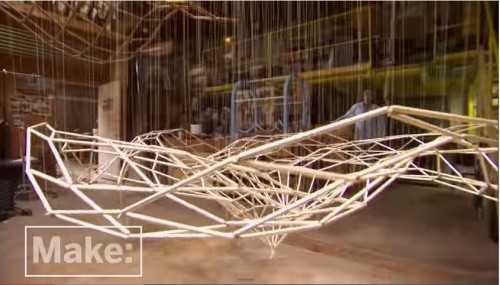Nature gives the artists and creators who study it much greater value than a mere source of inspiration. Investigating organisms in nature strengthens the researcher's ability to observe and sharpens his cognitive abilities

By: Yael Helfman Cohen and Melanie Samson
Nature has always been a source of inspiration for artists and creators. Throughout history, artists have observed nature and studied it in order to discover "truths" in the creations of "the Creator". These truths reflected in their eyes the embodiment of "divine beauty", which they aspired to embody in their works. The most striking example of the discovery and application of one of these "truths" is the golden ratio (or golden ratio: Φ = 1.618), which represents many measurements and sizes in nature and is found in many organisms in nature (such as shells, spirals in space galaxies, snowflakes, the human body, many plants , in DNA and the quantum world). From the time of ancient Egypt until today, the golden ratio has been widely used in many works of art and architecture around the world (such as in Greek temples, in Gothic churches, in the Dome of the Rock). In the attached link you can see an application of the golden ratio in sculptures created using XNUMXD printing. Link
But nature gives the artists and creators who study it much greater value than a mere source of inspiration. Investigating organisms in nature strengthens the researcher's ability to observe and sharpens his cognitive abilities. Nature does not draw boundaries between disciplines and invites us to understand how the basic principles in science and relationships work - the interaction between the foundation stones in its creations in harmony to realize goals and needs. Observing nature increases attention to the small details of organisms and deepens the understanding of the interrelationships between the various parts. The sharpening of the researcher's cognitive perception allows him to discover new details that he was not aware of before. This point in time of discovery is the starting point of the creative process - where the artist or creator begins to wonder and ask questions that advance the creative process.
The most famous artist and engineer to document and implement this creative process is Leonardo da Vinci. Both nature and engineering deal with the art of creating products, processes and systems that respond to specific needs. Leonardo da Vinci promoted engineering by transferring knowledge and insights derived from the study of organisms in nature and their ways of working to engineering applications, such as aviation mechanisms. Da Vinci was able to decipher the code of creation in nature and engineering by understanding the interrelationships between the building blocks in nature (which are also the same in engineering): shape, configuration, geometry, structure, strength, material and function - and their interaction in relation to space and time through the laws of nature .
Like Leonardo da Vinci, the artist Reuven Margolin also observes phenomena and organisms in nature, an observation that enhances his awareness of the small details, and is a catalyst for his creative planning process.
An interesting and innovative aspect of combining art, engineering and imitating nature is reflected in the work of Reuven Margolin, a visionary and creator of kinetic wave sculptures made of various materials (wood, cardboard and other objects), which trace movement mechanisms in nature. Margolin focuses on phenomena of flow and movement in nature such as individual drops of water or a powerful vortex, and creates elegant and mesmerizing sculptures.
Reuven Margolin does not try to copy nature but to relate to it and reflect its qualities: the delicacy and magic of a drop of water hitting the water or the waves created when the pelican lands in the water, and the power of eddies in nature. For example, Margolin observed the eddies created by rowing in the water and created a delicate, floating-looking artificial wave sculpture. Observing the movement of caterpillars inspired a kinetic structure that mimics this movement.
Designing and manufacturing these kinetic wave sculptures require knowledge, engineering, mechanical and mathematical skills. In order to produce flowing sculptures, Margolin combines many discrete units; The more individual units there are, the more flowing the sculpture is.
Margolin reports that the most exciting part of his work is just before the wave he designed and created is turned on for the first time. Margolin is always curious to know if the wave he created will be interesting, flowing, and beautiful,...like in nature.
